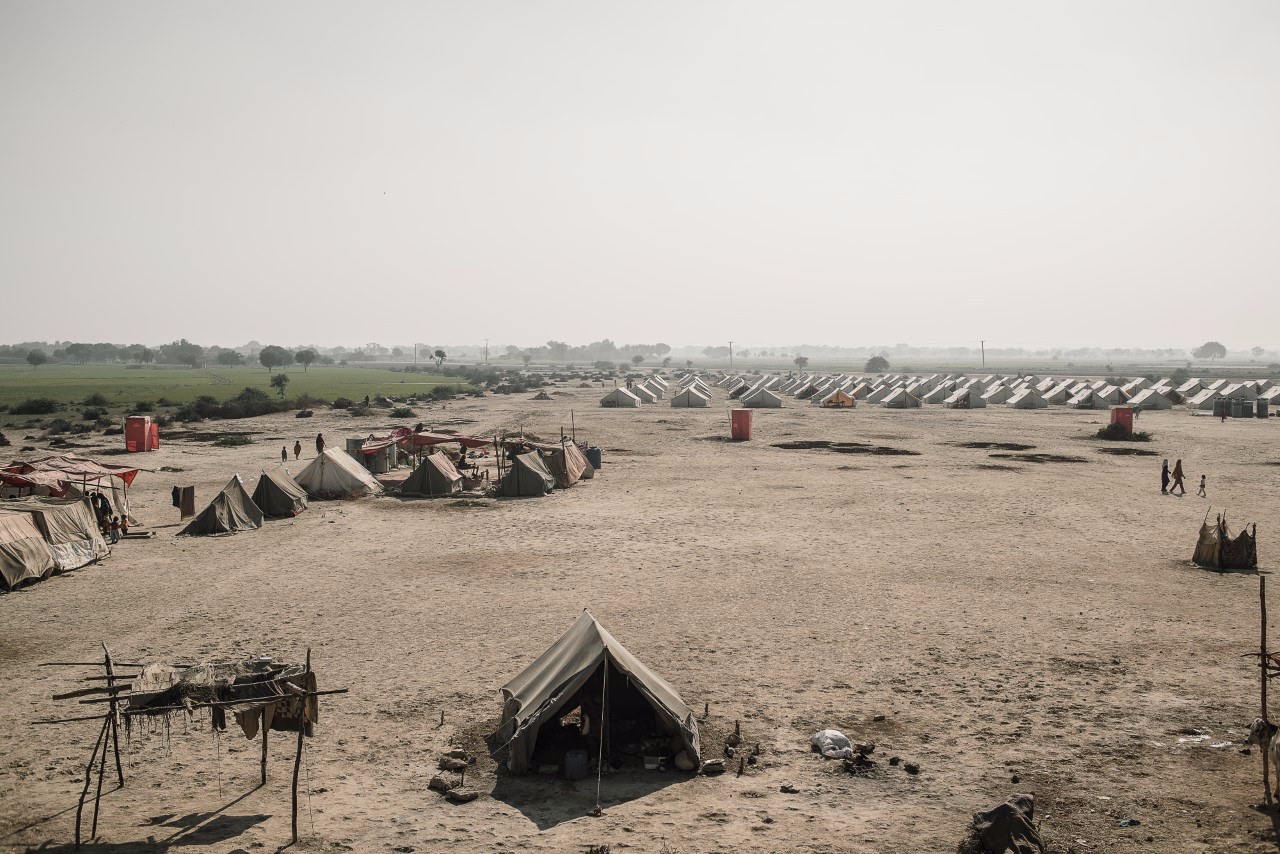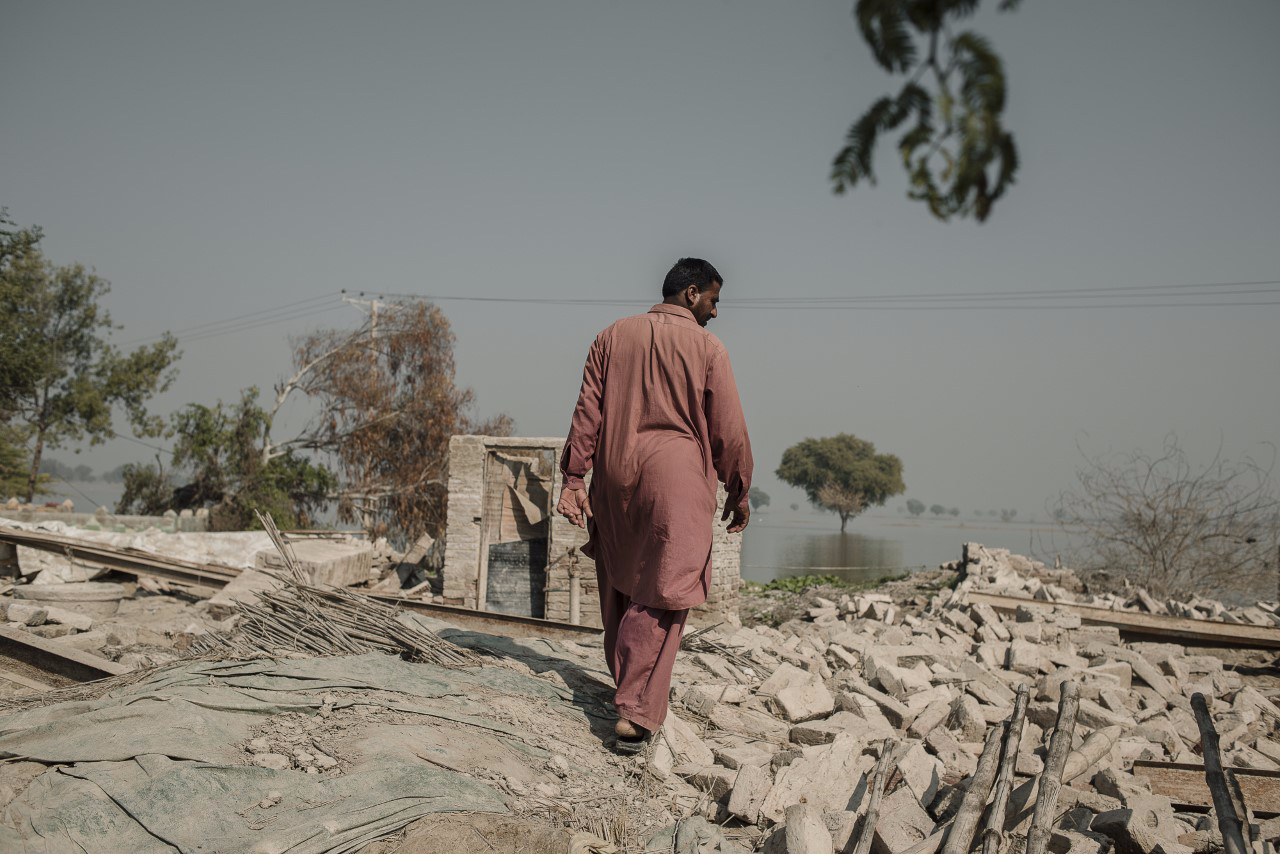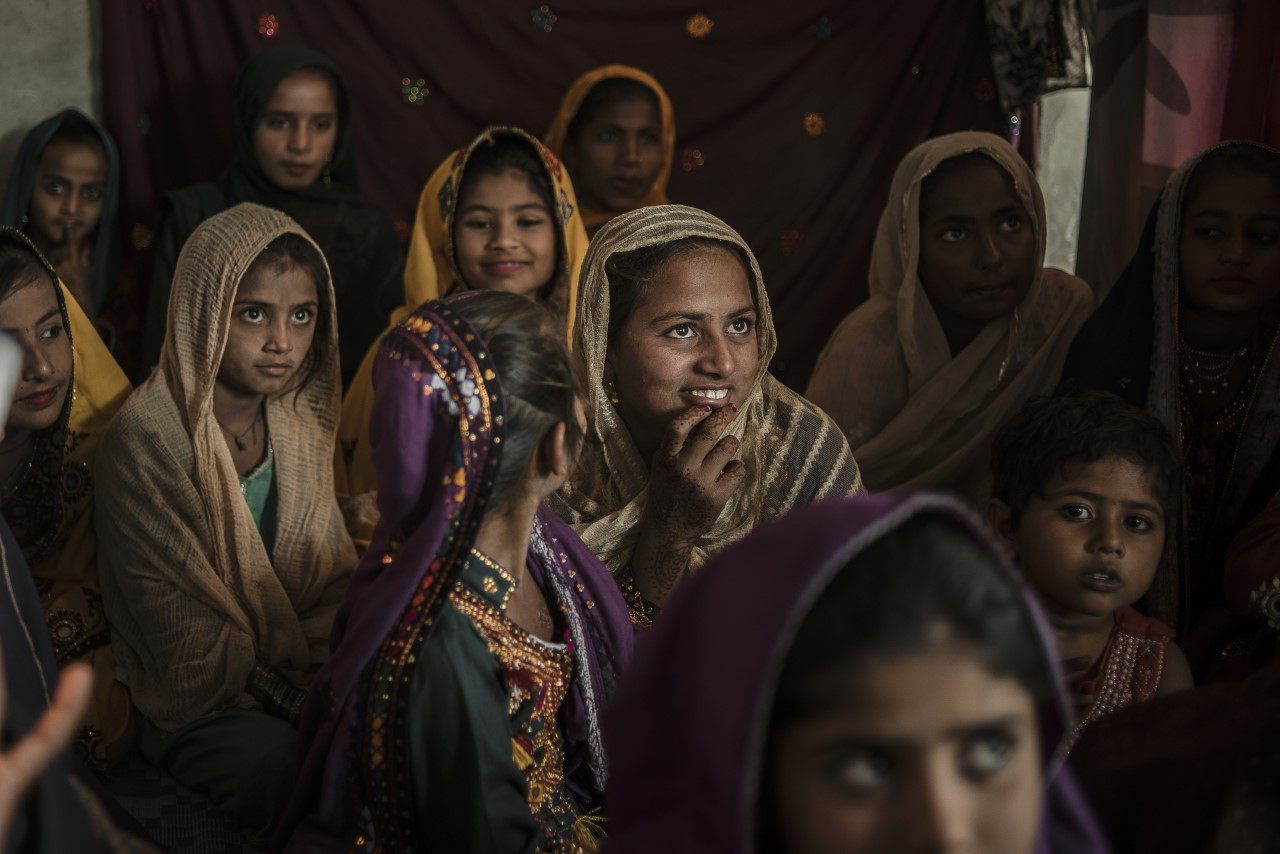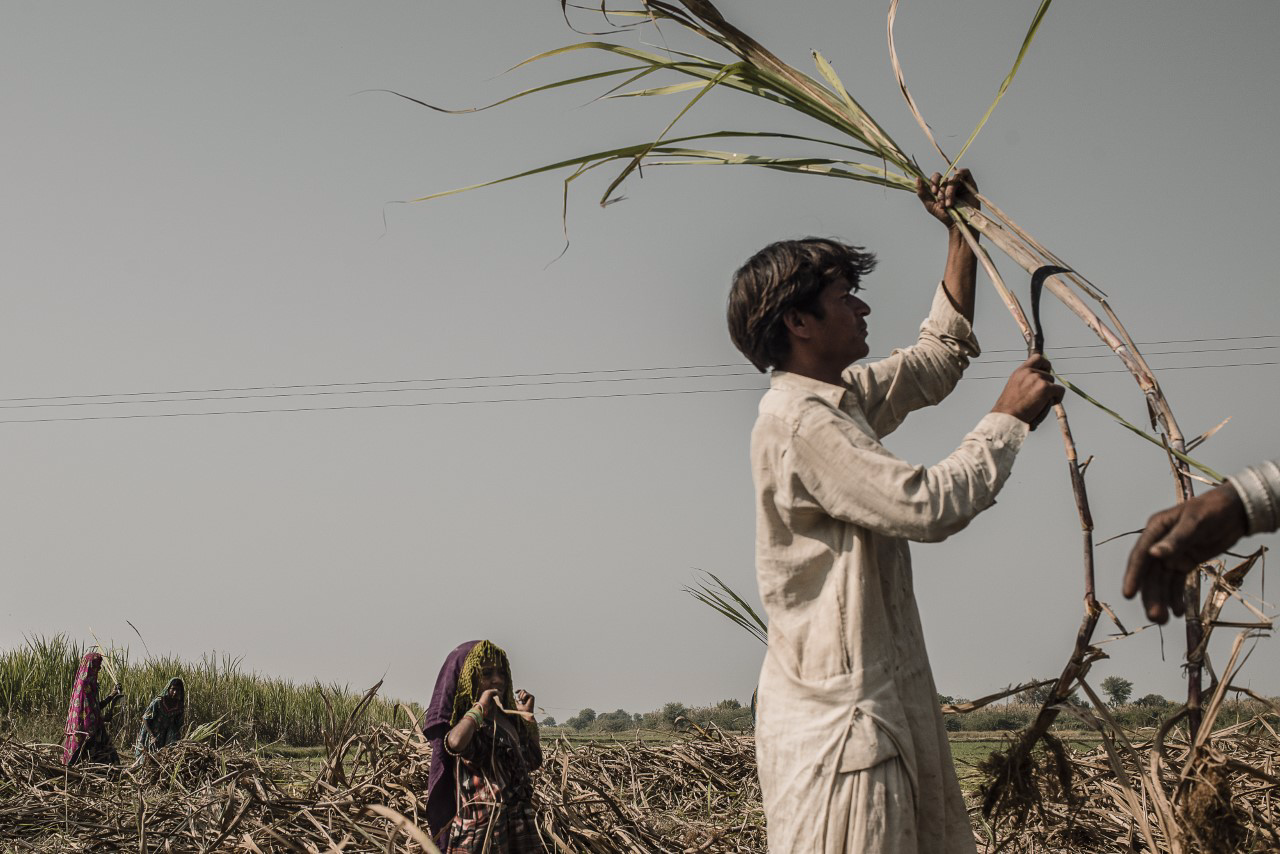At the end of August, one third of Pakistan was submerged: Some 30 million people were affected by the floods. Months later, more than 20 million nationwide still require regular humanitarian assistance. Hunger, waterborne illnesses such as diarrhoea, and inadequate drinking water are now part of their daily lives.
Earlier this month, photographer Jacob Zocherman travelled to Sindh province for The New Humanitarian to see how survivors were faring. Having lost homes and belongings in the floods, some 240,000 people in Sindh were still displaced as of early December.
“I’m surrounded by worries these days,” Allah Rakhyo told him, as he walked through the ruins of his home, looking troubled. Months after the devastating floods struck Pakistan, his small settlement outside Dadu remained surrounded by water. All the houses here had either been washed away or transformed to dust.
Concerns of both the displaced and those whose homes survived have been deepened by the floods’ massive impact on agriculture. Nearly half a million livestock died in Sindh during the flooding, according to Pakistan’s National Disaster Management Authority. Nearly three million acres of crops were destroyed. Even as the water recedes, farmers fear that salinisation from the floodwaters may have ruined these previously fertile lands for years to come.
Many residents in the farming areas of Sindh are already looking for jobs elsewhere. A typical situation is that the husband leaves to seek migrant work in a city such as Hyderabad or Karachi while the wife stays behind with the children. Rakhyo himself hopes he and his family can move to avoid a repeat disaster.
“We have lived here for generations but, if we could, we would all like to move out from this area to avoid this from happening again,” he told The New Humanitarian.
Millions still at risk

A tent camp outside Dadu houses around 500 people. Due to its proximity to the Indus River and Lake Manchar, Dadu was hit hard by the floods. Normally a fertile and green paradise, its land now looks like a desert surrounded by water. Almost a quarter of a million remain displaced in Sindh province alone. Countless more have tried moving back to their homes, meaning they sleep outdoors, since most of the buildings are completely or partially damaged and not fit to live in. Millions remain exposed to standing water from the flooding, leaving them at greater risk from waterborne disease.
‘We will never be able to rebuild as it was before’

On a visit to his home, Allah Rakhyo walks across the rubble that remains. Water still surrounds the area – residents until recently had to take boats when they returned to assess the damage. Apart from some school books, money, and ID cards, Rakhyo and his family left everything behind when they fled the rising floodwaters. “We will never be able to rebuild it as it was before,” he said. The family is struggling to get by on the small savings they had before the flood, while Rakhyo tries to find what manual labour he can in order to bring in even a small income.
‘I have been very stressed about my children’

Women and girls gather in a safe space provided by the International Rescue Committee. Most schools in affected areas in Sindh have been demolished since the floods, while many women have been uprooted from their communities. In these safe spaces, children can play and study while their mothers come together to discuss their trauma with a counsellor. The women are also provided with materials for embroidery, which they can later sell to get an income for the household. “I have been very stressed about my children and the diseases they got after the floods, such as typhoid and malaria, so it has been nice to come here and pass time with others,” said Eid Ismail.
Farming woes

The need for other sources of income is particularly acute given the blow to farming. Here, a farmer harvests sugarcane. But most of the harvest was destroyed by the floods, and much of the land will be too salty to produce a full harvest. It will take two to five years before the harvests will be normal again, according to the landowners The New Humanitarian spoke to. A major agricultural centre, Sindh provides 42% of Pakistan’s rice and nearly a third of its sugarcane. It’s estimated that more than $1.5 billion worth of livestock and crops were lost in the flooding.
‘There are many skin diseases today that were not here before’

Men and children queue in order to collect medicine at a mobile primary health post outside Dadu. The clinic sees between 500 and 750 patients a day. “There are many skin diseases today that were not here before,” Santosh Kumar, the doctor responsible for the clinic, told The New Humanitarian. The flood disaster laid bare and worsened healthcare inequities in Pakistan, where many struggle to access care. While most provinces in Pakistan have started to see a decrease in waterborne illnesses, pockets of Sindh and Balochistan continue to report a high number of malaria and cholera cases.
Continued dangers

Cows bathe in the floodwater outside Dadu. In some areas, the floodwaters are still two to four metres deep, posing a lingering hazard. Parents worry about drowning deaths, especially as most children here can’t swim. The stagnant water also provides a breeding ground for malaria, as well as driving diarrhoea and other illnesses. Survivors told The New Humanitarian that diarrhoea remains very common, but saw some hope in decreasing dengue and malaria cases due to the cooling temperatures.
Edited by Abby Seiff.





